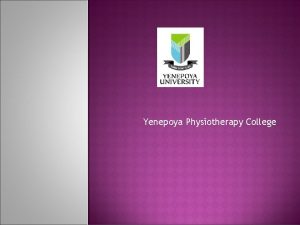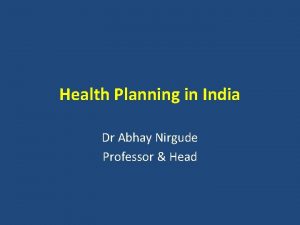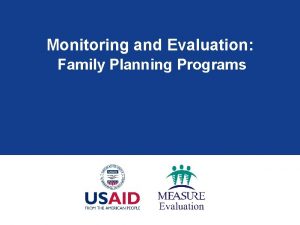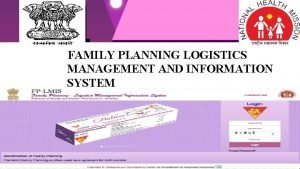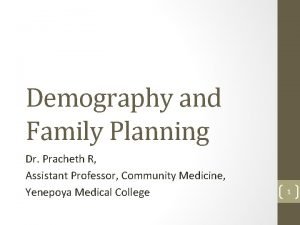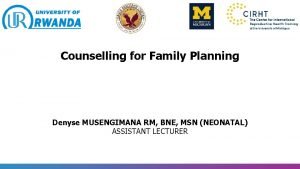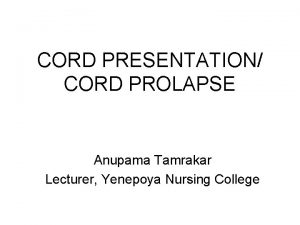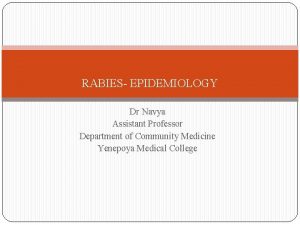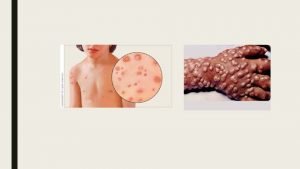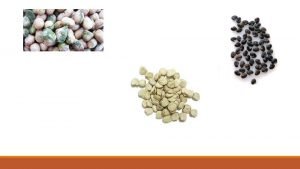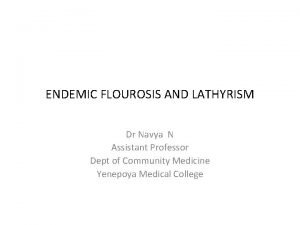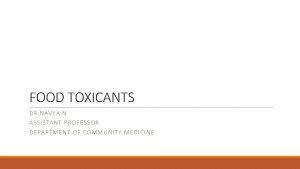Family planning in India Ms Navya Lecturer Yenepoya































- Slides: 31


Family planning in India • Ms. Navya • Lecturer • Yenepoya College of Nursing • • Peer reviewed by: Mr. Anand Assist Professor Community Health Nursing

Objective • At the end if the class student will be able to • List down the classification of family planning • Explain regarding IUCD

CLASSIFICATION Spacing method: • Barrier method • Intrauterine method • Hormonal method • Post coital method Terminal method

BARRIER METHOD • • • Condoms (male and female) �Spermicidal �Sponge �Diaphragm �Cervical cap

Male condoms: • These are made up of polyurethane or latex. • Silicon used now a days to produce semi dry Prelubricated forms. • In India one particularly brand is widely marketed as ‘Nirodh’. • Spermicidal – coated with nonoxynol on inner and outer surfaces.

ADVANTAGES: �Simple spacing method �No side effects �Easily available, safe & inexpensive �Protects against STDs DISADVANTAGES �Chances of slip off and tear off �Allergic reaction to latex �Failure rate: 16%

Female condoms • It is a pouch made up of polyurethane which lines the vagina and also external genitalia. • It is 17 cm in length with one flexible polyurethane ring at each end. ADVANTAGES: • Prevents STDs including HIV/AIDS • Not damaged by oils and other chemical

DISADVANTAGES: • High motivation • Only women who can use diaphragms can use female condom • Slippage occurs • Expensive • Failure rate 21% with typical use and 5% with correct and consistent use.

Diaphragm • Most common and easiest to fit and use. • Thin, nearly hemispherical dome made of rubber or latex material, with circular, covered metal spring at periphery (flat type and coil type) • External diameter of rim is size of diaphragm – 45 mm • diameter rising in steps of 5 mm to 105 mm (most common 60, 65, 70, 75, 80).

CONT. . • The device is introduced up to 3 hrs. before • intercourse and is to be kept for at least 6 hrs after • intercourse. ADVANTAGES: • �cheap • �No gross medical side effects • �Control of pregnancy in hands of woman • �Reasonably safe when properly used • �Prevent spread of STDs though less effective than • condom

DISADVANTAGES • • • Requires help of doctor to measure the size required. Need high motivation Allergic reaction to rubber Erosion UTI’s

SPERMICIDES • Available as vaginal foams , gels , creams , tablets and suppositories. • Contain surfactant like nonoxynol 9, benzalkonium chloride. • Alter the sperm surface membrane permeability • Resulting in killing of sperm.

ADVANTAGES: • • �No instructions by doctors or nurses �Easily available and easy to use �No gross medical side effects DISADVANTAGES �Failure rate high when used alone �Can increase spread of HIV infection by irritating vaginal and cervical mucosa �Failure rate – 21% with typical use and 6%

Vaginal contraceptive sponge • The sponge is a doughnut-shaped device made of soft foam coated with spermicide. • Made up of polyurethane with 1 gm of nonoxynol-9 as a spermicide. • It releases spermicide during coitus, absorbs ejaculate and blocks the entrance of cervical canal. • To use the sponge, it must be moistened with water. • Once inserted in the vagina, it covers the cervix and blocks sperm from entering the uterus

DISADVANTAGES • • May get broken Difficult to removal High pregnancy rate Allergic reactions Vaginal dryness, soreness May damage vaginal epithelium Increase risk of HIV transmission

INTRAUTERINE DEVICES • Intrauterine Device The IUD is a small, Tshaped, • plastic device that is inserted and left inside the uterus • to prevent pregnancy.

CLASSIFICATION OF IUDs • Intra Uterine Device v. Non medicated: First generation v. Medicated : Second generation Third generation

First generation • Non-medicated made up of polyethylene. • Different shapes and sizes • LIPPE’S LOOP • Double ‘s’ shaped device , made up of polyethylene material. • Non- toxic, non-tissue reactive and extremely durable. • Small amount of barium sulphate is also added for radiological examination • Available in 4 sizes A, B, C, D

Second generation • Made up of metal Cu • Earlier devices Cu-7 , Cu-T 200 • Newer devices T copper 220 C , T copper 380 C , nova T • multiload devices: • ML-Cu 250 • ML-Cu 375

Third generation • Hormones releasing IUD • PROGESTASTERT : • Most commonly used T shaped device filled with 38 mg • progesterone • Effective for 1 year • LNG- mirena • Mirena (levonorgestrel-releasing intrauterine device) is a • form of birth control that is indicated for intrauterine • contraception for up to 5 years and Releases 20 μg of • levonorgestrol. • Effective for 5 years.

SIDE EFFECTS �Amenorrhea �Intermenstrual bleeding and spotting �Abdominal/pelvic pain �Ovarian cysts �Headache/migraine �Acne �depressed/altered mood.

ADVANTAGES OF IUD • Safe • effective , Reversible • Long action , Inexpensive DISADVANTAGES • Heavy bleeding and pain • Pelvic inflammatory diseases • Ectopic pregnancy • May come out accidently if not properly inserted.

CONTRAINDICATION �History of PID �Abnormal shaped uterus �Ectopic pregnancy �Menorrhagia

HORMONAL CONTRACEPTIVES Oral : • Combined Prep • Single Prep Parenteral : • Injectables • Implants

HORMONAL CONTRACEPTIVES With hormonal birth control , a women takes hormones similar to those her body makes naturally. �Hormonal contraceptives are mostly for female sex steroids.

Oral contraceptives • Combined oral contraceptive pills • Commonly used progestin are either levonorgestrol or Norethisterone and estrogens are ethiyl estradiol or menstranol. • COMMERCIAL NAMES NO. OF TABLETS • Mala–N 21+7 iron tab. • Mala –D 21+7 iron tab. • Loette (desogestrel 0. 15) 21 tab.

Contraindications • • ABSOLUTE: Circulatory diseases Severe HTN Angina, ischemic heart dis. Liver disease Tumors Pregnancy breast cancer, breast feeding.

benefits �contraceptive benefits: �Protection against unwanted pregnancy �Convenient to use. �Non-contraceptives benefits: �Regulation of menstrual cycle �Reduction of dysmenorrhea �Protection against PID, fibroids, ovarian cysts, chances • of cancer. • •

Recapitualization • What are all the type of contraceptive?

Reference • • K. Park Community Health Nursing Neelam Kumari Community Health Nursing N. J Singh Community Health Nursing Thressiamma Community Health Nursing
 Lecturer's name
Lecturer's name Electroplating station
Electroplating station Yenepoya nursing college
Yenepoya nursing college Yengage notes
Yengage notes Yenepoya physiotherapy college
Yenepoya physiotherapy college Jeannie watkins
Jeannie watkins Spe distinguished lecturer
Spe distinguished lecturer Good morning teacher
Good morning teacher Photography lecturer
Photography lecturer Lecturer in charge
Lecturer in charge Designation lecturer
Designation lecturer Designation of lecturer
Designation of lecturer Gcwak
Gcwak Lecturer name
Lecturer name Pearson lecturer resources
Pearson lecturer resources Spe distinguished lecturer
Spe distinguished lecturer Lector vs lecturer
Lector vs lecturer Lecturer in charge
Lecturer in charge Cfa lecturer handbook
Cfa lecturer handbook Lecturer asad ali
Lecturer asad ali Jungalwala committee
Jungalwala committee Conclusion on topic family
Conclusion on topic family Periodic table families
Periodic table families Binuclear family vs blended family
Binuclear family vs blended family Purpose of family planning
Purpose of family planning Monitoring and evaluation of family planning programs
Monitoring and evaluation of family planning programs Natural family planning calendar
Natural family planning calendar Barrier method of family planning
Barrier method of family planning Fp-lmis logistics management
Fp-lmis logistics management Define small family norm
Define small family norm Gather approach in counselling
Gather approach in counselling 5 benefits of family planning
5 benefits of family planning




